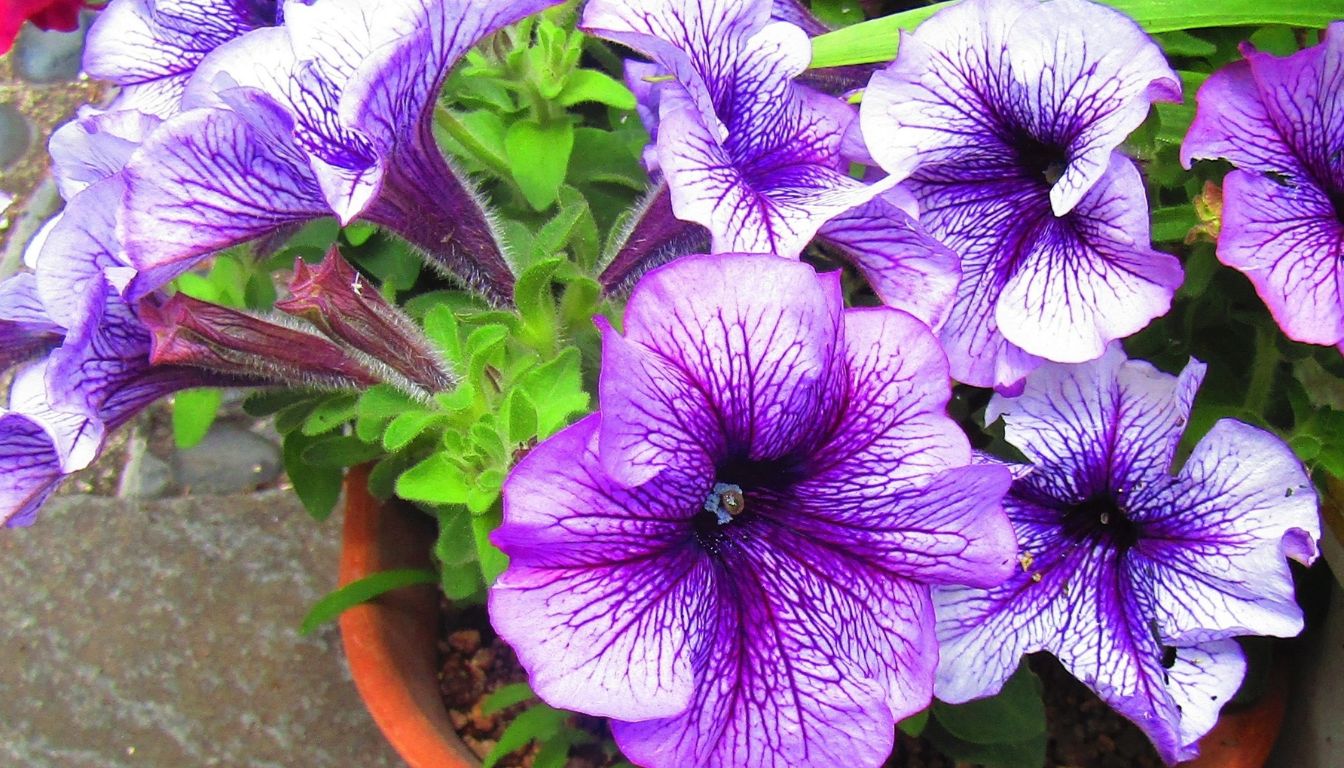If you’re dreaming of vibrant petunias brightening up your garden, you might be wondering how long it takes to grow them from seed. These stunning flowers not only add color but also bring life to any outdoor space. I’ve been captivated by their beauty and resilience, and I can’t wait to share what I’ve learned about their growth journey.
Understanding Petunias
I find petunias fascinating. Their ability to light up gardens and containers with vibrant colors makes them a delightful choice. Let’s explore the different types and the best conditions for growing these beautiful flowers.
Types of Petunias – How Long to Grow Petunias from Seed: A Full Guide
Petunias come in several types, each adding unique charm.
- Grandiflora Petunias: These types boast large flowers and offer a stunning display. They thrive in containers and garden beds.
- Multiflora Petunias: Smaller flowers define this variety. They bloom profusely, making them excellent for mass plantings.
- Trailing Petunias: Perfect for hanging baskets, trailing petunias spill beautifully over the edges. They create a lovely cascading effect.
- Wave Petunias: Known for their spreading habit, wave petunias cover a large area. They’re low-maintenance and quite forgiving.
All these types provide different colors and patterns, making them a versatile choice for any garden.
Ideal Growing Conditions
Petunias thrive in specific conditions. They prefer full sun, soaking in six to eight hours of direct sunlight daily. Their ideal soil is well-draining with a pH between 6.0 and 7.0.
Watering is essential, but don’t overdo it. Keep the soil moist, and let it dry slightly between waterings. Feeding them with a balanced liquid fertilizer every few weeks promotes healthy growth and abundant blooms.
Temperature is also vital. Petunias enjoy daytime temperatures around 70°F to 85°F. Planting in the spring after the last frost ensures the best growth.
Remember these conditions, and your petunias will flourish beautifully.
Timeframes for Growth

Growing petunias from seed involves specific timeframes. Understanding these timeframes helps me plan my gardening and enjoy the blooms sooner.
Germination Period – How Long to Grow Petunias from Seed: A Full Guide
Germination takes around 7 to 14 days. I place the seeds in a warm environment with moisture. Checking daily helps ensure they don’t dry out. Once I see tiny sprouts, excitement kicks in. It’s a critical milestone in the growth journey.
Seedling Development
After germination, seedling development starts. This stage spans 3 to 4 weeks. During this period, I provide plenty of light, around 12 to 16 hours daily. Keeping the soil consistently moist helps the seedlings thrive. When they reach about 3 to 4 inches tall, I know they’re ready for transplanting. Watching them grow fills me with joy, knowing vibrant blooms are just around the corner.
Factors Influencing Growth Rate
Several key factors influence how long petunias take to grow from seed. Understanding these elements can help ensure a successful blooming experience.
Temperature and Weather – How Long to Grow Petunias from Seed: A Full Guide
Temperature plays a significant role in petunia growth. They thrive in temperatures between 70°F and 75°F (21°C to 24°C) during the day. If temperatures dip below 60°F (15°C), growth slows down. Consistent warm weather fosters quicker germination.
While petunias can tolerate the occasional chill, they aren’t fans of frost. It’s wise to plant them only after the last frost date in your area. On warm, sunny days, I like to imagine them soaking up the rays while they stretch towards the sky.
Soil Quality
Soil quality affects root development and nutrient access. Petunias favor well-draining soil packed with organic matter. Amending the soil with compost enriches it and promotes healthy growth. I often mix in some peat moss to improve aeration. This simple addition helps avoid soggy roots, which can lead to rot. A soil pH between 6.0 and 6.5 works best. I always check my soil’s acidity level. Keeping the right balance boosts growth rates and keeps those colorful blooms coming.
Care Tips for Successful Growth
Growing petunias requires careful attention to a few key aspects. With the right techniques, these colorful flowers can bloom beautifully in gardens.
Watering Techniques – How Long to Grow Petunias from Seed: A Full Guide
Watering petunias correctly keeps them healthy. I check the soil moisture regularly. It’s essential to water when the top inch of soil feels dry. Overwatering can lead to root rot, so I avoid leaving the plants sitting in water. When I water, I aim for the base of the plants to keep the foliage dry. This approach helps prevent diseases while ensuring the roots soak up the water.
Fertilizing Guidelines
Fertilizing petunias boosts their growth and blooming potential. I apply a balanced, water-soluble fertilizer every 4 to 6 weeks. Diluting the fertilizer to half-strength helps avoid chemical burns. In the early stages, I focus on fertilizers higher in phosphorus to promote flowering. Once blooms appear, I switch to a balanced formula that supports overall growth. This strategy keeps my petunias vibrant and encourages them to flourish throughout the season.
Before You Go – How Long to Grow Petunias from Seed: A Full Guide

Growing petunias from seed is a rewarding journey that brings vibrant colors to any garden. With the right conditions and care, these beautiful flowers can flourish and enhance outdoor spaces. I’ve shared my personal experiences and tips to help you navigate the growth process, from germination to transplanting.
Remember to keep an eye on temperature and soil quality as they play crucial roles in the growth rate. By following the guidelines outlined, you’ll set yourself up for success. I can’t wait for you to experience the joy of watching your petunias bloom beautifully. Happy gardening!
Don’t forget to add theherbprof.com homepage to your favourites so you don’t miss out on future articles.
References – How Long to Grow Petunias from Seed: A Full Guide
Little Herb Encyclopedia, by Jack Ritchason; N.D., Woodland Publishing Incorporated, 1995
The Ultimate Healing System, Course Manual, Copyright 1985, Don Lepore
Planetary Herbology, Michael Tierra, C.A., N.D., Lotus Press, 1988
Handbook of Medicinal Herbs, by James A. Duke, Pub. CRP Second Edition 2007
The Complete Medicinal Herbal, by Penelope Ody, Published by Dorling Kindersley
Check the Following Article
Baking Soda for a Brighter Smile: Toothpaste Alternative
Warm Lemon Water Benefits for Weight Loss and Wellness
Growing Pomegranates from Seeds: Tips and Techniques
Replacing Sugar with Stevia in Baking: The Truth Revealed
Frequently Asked Questions – How Long to Grow Petunias from Seed: A Full Guide
What types of petunias can I grow from seed?
Petunias come in several varieties, including Grandiflora, Multiflora, Trailing, and Wave. Each type has unique characteristics, making them versatile options for various garden styles. Choose the variety that best suits your gardening needs and aesthetic preferences.
How long does it take for petunia seeds to germinate?
Petunia seeds typically take about 7 to 14 days to germinate. Providing a warm, moist environment is crucial for successful germination, so be sure to monitor them daily during this period.
What are the ideal growing conditions for petunias?
Petunias thrive in full sun and prefer well-draining soil. They grow best in temperatures between 70°F and 75°F (21°C to 24°C). Ensure soil quality is rich in organic matter, and maintain a pH level between 6.0 and 6.5 for optimal growth.
When should I transplant petunia seedlings?
Once petunia seedlings reach about 3 to 4 inches tall, they are ready for transplanting. This usually occurs 3 to 4 weeks after germination. Ensure the outdoor conditions are suitable and that you’ve waited until after the last frost date.
How do I care for my petunias?
Proper care for petunias includes checking soil moisture regularly and watering only when the top inch of soil feels dry. Fertilize with a balanced, water-soluble fertilizer every 4 to 6 weeks, focusing initially on phosphorus for blooming and then using a balanced formula for overall growth.
What are common watering tips for petunias?
Water petunias at the base of the plants to keep foliage dry and reduce disease risk. Avoid overwatering to prevent root rot, and only water when the top inch of the soil is dry, ensuring your plants remain healthy and vibrant.

